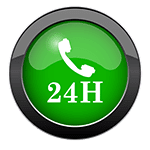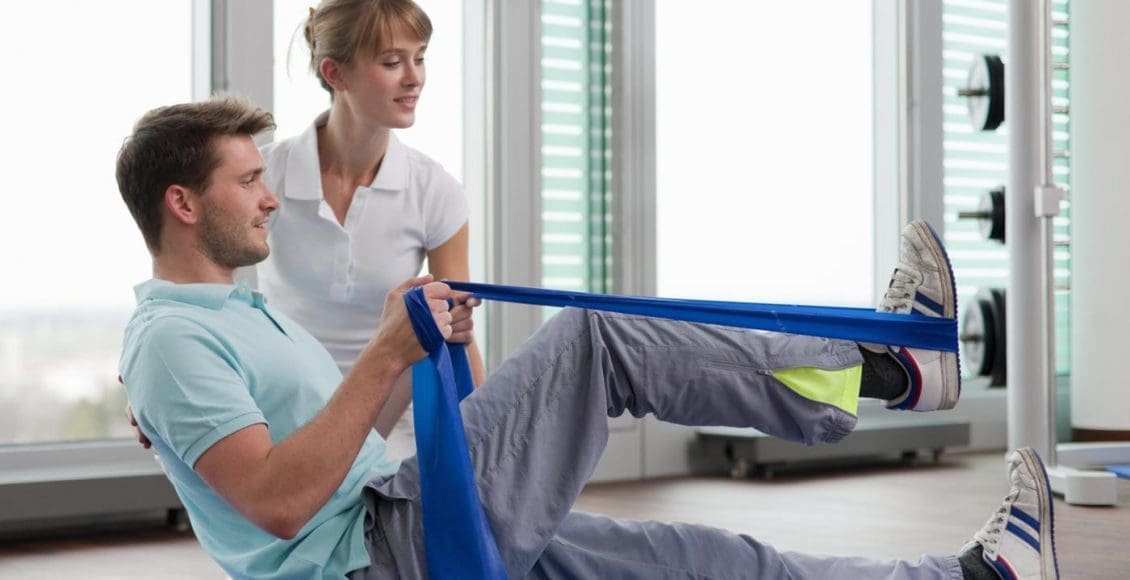Training doesn’t make us fitter – recovery from training does. So, how do we recover? An easy jog or spin, or a lazy day on the sofa, asks Beate Stindt, chartered physiotherapist at Six Physio.
​Recovery can be either active or passive. Passive recovery is just that; total rest. A passive recovery day should not include any training. On these days you should rest and recover, which means no spring cleaning and no walking around the shops for the whole day.
An active recovery session usually involves your usual sport, be it running, swimming, cycling or yoga, but at an easy to moderate intensity. Active recovery has been likened to a short nap – the aim is to feel better at the end of your workout than you did at the beginning. Training for an event places a huge amount of stress on your body and hard sessions result in the hormone cortisol being released. Cortisol is a natural anti-inflammatory but, left to hang around in the blood for too long, can negatively interfere with muscle regeneration.
Table of Contents
Active vs Passive Recovery
One aim of active recovery is to clear the metabolic waste resulting from exercise, as well as providing a higher level of blood flow to muscles in need of nutrients, allowing them to repair themselves.
While there is not yet conclusive evidence showing whether or not this really does result in quicker recovery, if you are going to try it, it’s important that it’s done correctly so as not to contribute to fatigue. Many athletes will use an active recovery session as a technical workout and focus on form and technique, something they might not be able to do during sessions with a higher intensity where technique work can be drowned out.
Some athletes will have a recovery workout in between two hard workouts while others may include a recovery week in their training programme. A general rule of thumb for a recovery week/session would be to reduce the volume of your training by approximately 30 per cent. If you train according to heart rate, make sure you complete your session at less than 60 per cent of your maximum heart rate. If you need a break from all technology, as a general rule you should make sure you can still continue a conversation. You should be able to speak in full sentences and not only the odd word or grunt.
Another way to make sure that you are not working too hard is to make sure you are comfortable breathing through your nose (make sure all nasal passages are clear!).
So which is best? The jury is still out. Like so many things in training, everyone has their own personal preference and it is important to find your own and do it correctly. If you’re going to include active recovery sessions as a part of your training, resign yourself to the fact that you might not get admiring looks from passers by or that you might be overtaken by your elderly neighbor on her bicycle with a fully laden basket. But remember: that’s okay!
The scope of our information is limited to chiropractic and spinal injuries and conditions. To discuss options on the subject matter, please feel free to ask Dr. Jimenez or contact us at 915-850-0900 . 
Additional Topics: Chiropractic and Athletic Performance
Although warm-up stretches, exercise and plenty of training activities are practiced on a regular basis to prevent injuries, many athletes frequently experience sports injuries during their specific physical activity and/or sport. Fortunately, chiropractic care can help treat and rehabilitate athletes, in order for them to return to the field as soon as possible. Chiropractic has also been demonstrated to help increase athletic performance.
.video-containerposition: relative; padding-bottom: 63%; padding-top: 35px; height: 0; overflow: hidden;.video-container iframeposition: absolute; top:0; left: 0; width: 100%; height: 100%; border: none; max-width:100%!important;
TRENDING TOPIC: EXTRA EXTRA: New PUSH 24/7Â®ï¸ Fitness Center
Post Disclaimer
Professional Scope of Practice *
The information herein on "Active or Passive Recovery: Which is Better?" is not intended to replace a one-on-one relationship with a qualified health care professional or licensed physician and is not medical advice. We encourage you to make healthcare decisions based on your research and partnership with a qualified healthcare professional.
Blog Information & Scope Discussions
Welcome to El Paso's Premier Wellness, Personal Injury Care Clinic & Wellness Blog, where Dr. Alex Jimenez, DC, FNP-C, a Multi-State board-certified Family Practice Nurse Practitioner (FNP-BC) and Chiropractor (DC), presents insights on how our multidisciplinary team is dedicated to holistic healing and personalized care. Our practice aligns with evidence-based treatment protocols inspired by integrative medicine principles, similar to those found on this site and our family practice-based chiromed.com site, focusing on restoring health naturally for patients of all ages.
Our areas of multidisciplinary practice include Wellness & Nutrition, Chronic Pain, Personal Injury, Auto Accident Care, Work Injuries, Back Injury, Low Back Pain, Neck Pain, Migraine Headaches, Sports Injuries, Severe Sciatica, Scoliosis, Complex Herniated Discs, Fibromyalgia, Chronic Pain, Complex Injuries, Stress Management, Functional Medicine Treatments, and in-scope care protocols.
Our information scope is multidisciplinary, focusing on musculoskeletal and physical medicine, wellness, contributing etiological viscerosomatic disturbances within clinical presentations, associated somato-visceral reflex clinical dynamics, subluxation complexes, sensitive health issues, and functional medicine articles, topics, and discussions.
We provide and present clinical collaboration with specialists from various disciplines. Each specialist is governed by their professional scope of practice and their jurisdiction of licensure. We use functional health & wellness protocols to treat and support care for musculoskeletal injuries or disorders.
Our videos, posts, topics, and insights address clinical matters and issues that are directly or indirectly related to our clinical scope of practice.
Our office has made a reasonable effort to provide supportive citations and has identified relevant research studies that support our posts. We provide copies of supporting research studies upon request to regulatory boards and the public.
We understand that we cover matters that require an additional explanation of how they may assist in a particular care plan or treatment protocol; therefore, to discuss the subject matter above further, please feel free to ask Dr. Alex Jimenez, DC, APRN, FNP-BC, or contact us at 915-850-0900.
We are here to help you and your family.
Blessings
Dr. Alex Jimenez DC, MSACP, APRN, FNP-BC*, CCST, IFMCP, CFMP, ATN
email: coach@elpasofunctionalmedicine.com
Multidisciplinary Licensing & Board Certifications:
Licensed as a Doctor of Chiropractic (DC) in Texas & New Mexico*
Texas DC License #: TX5807, Verified: TX5807
New Mexico DC License #: NM-DC2182, Verified: NM-DC2182
Multi-State Advanced Practice Registered Nurse (APRN*) in Texas & Multi-States
Multistate Compact APRN License by Endorsement (42 States)
Texas APRN License #: 1191402, Verified: 1191402 *
Florida APRN License #: 11043890, Verified: APRN11043890 *
License Verification Link: Nursys License Verifier
* Prescriptive Authority Authorized
ANCC FNP-BC: Board Certified Nurse Practitioner*
Compact Status: Multi-State License: Authorized to Practice in 40 States*
Graduate with Honors: ICHS: MSN-FNP (Family Nurse Practitioner Program)
Degree Granted. Master's in Family Practice MSN Diploma (Cum Laude)
Dr. Alex Jimenez, DC, APRN, FNP-BC*, CFMP, IFMCP, ATN, CCST
My Digital Business Card
RN: Registered Nurse
APRNP: Advanced Practice Registered Nurse
FNP: Family Practice Specialization
DC: Doctor of Chiropractic
CFMP: Certified Functional Medicine Provider
MSN-FNP: Master of Science in Family Practice Medicine
MSACP: Master of Science in Advanced Clinical Practice
IFMCP: Institute of Functional Medicine
CCST: Certified Chiropractic Spinal Trauma
ATN: Advanced Translational Neutrogenomics






 Again, We Welcome You.
Again, We Welcome You.
Comments are closed.